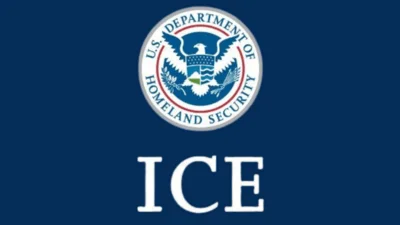Washington, DC - Senate Finance Committee Chairman Max Baucus (D-Mont.) today led the panel in a 17-4 vote approving the “Heartland, Habitat, Harvest, and Horticulture Act of 2007." The fully-offset “4-H Bill" - totaling $15.05 billion prior to the addition of amendments today - will create a trust fund to help ranchers and farmers hurt by crop and livestock losses, convert a number of conservation payment programs into fully-offset tax credit programs, and offer additional incentives for rural economic development and energy-related tax relief to aid agricultural producers. Creating the disaster assistance trust fund and converting payment programs to tax credits will free up previously obligated spending funds for the Agriculture Committee to use elsewhere in farm bill spending.
“This disaster assistance, tax relief, and timely energy incentives will provide a muchneeded boost to American agriculture and greater security to our hardworking agricultural producers," Baucus said. “Whether it’s getting a few more dollars in their pockets, rewarding their conservation of American lands, or making sure that one disaster won’t force them to sell the family farm, this package is good for producers in my home state of Montana and across the country."
A summary of the package follows below, noting provisions contained in the modification to the original Chairman’s mark. A description of amendments approved at the markup today -
including the Baucus amendment providing the bulk of the bill’s offset through codification of economic substance, and approximately $1 billion in additional paid-for provisions proposed by Finance Committee members - is below as well.
-------------------------------
Disaster Assistance
Permanent Agricultural Disaster Assistance Trust Fund: Currently, farmers and ranchers may have to wait years to receive assistance from Congress for agricultural disasters. Farmers and ranchers need to know that when weather related disasters strike, a dependable safety net exists.
The proposal creates a trust fund for disaster relief that would cover the “shallow losses" not covered by crop insurance. The proposal requires farmers and ranchers to purchase crop insurance in order to be eligible for disaster assistance. The trust fund will be funded through allocation of tariffs. Cost of the provision in the modification to the Chairman’s mark is $5.1 billion over five and ten years. It will include:
Tree Assistance: Assistance to specialty crop farmers whose trees, bushes and vines are lost due to a natural disaster. Payments will help to defray the cost of reestablishing orchards and vineyards.
Pest and Disease Management and Disaster Prevention: A new program under which USDA will conduct early pest detection and surveillance activities in coordination with State departments of agriculture, will prioritize and create action plans to address pest and disease threats to specialty crops, and will create an audit based certification approach to protect against the spread of plant pests which could cause crop losses.
New Farmers
Agricultural Bond Improvements: “Aggie Bonds" are tax-exempt bonds that provide lowinterest loans for first-time ranchers and farmers. Baucus’s proposal updates the structure of Aggie Bonds for the first time in 26 years. The proposal would increase the loan limit from $250,000 to $450,000, and index the limit amount for inflation. It would also eliminate the dollar limitation in the definition of “substantial farmland." Cost is $19 million over ten years.
Installment Sale Modification for Single-Purpose Agricultural Property: Single-purpose agricultural property (such as chicken barns, pig barns, and vineyard property) may be depreciated more quickly than other real estate, but this depreciation is subject to a recapture provision when the property is sold. This means that a taxpayer who has taken significant amounts of accelerated depreciation on single-purpose agricultural property may be reluctant or unable to sell or exchange the agricultural property due to the large amount of ordinary income tax due at the time of the sale or exchange. The proposal allows a taxpayer to pay recapture obligations in installments over a period of time, rather than all at once in the year of the sale. Cost is $246 million over ten years.
Conservation
Conservation Reserve Program Tax Credits Currently, participants in the Department of Agriculture’s Conservation Reserve Program (CRP) receive cash payments. The proposal will allow a participant in CRP the option to choose between the regular cash payment and a tax credit. The tax credit will be equal to 100% of the value of the cash payment the participant would have otherwise received and the credit will be excludable from both income and selfemployment taxes. Cost is $3.771 billion over ten years.
Wetlands Reserve Program and Working Grasslands Protection Program Tax Credits:
Currently, participants in the Wetlands Reserve Program and Working Grasslands Protection Program receive cash payments for easements they sell to the government. The proposal will allow a participant in the Wetlands Reserve Program and the Working Grasslands Protection Program the option to choose between the cash payment for the easement or a tax credit. A tax credit will be equal to the value of the payment they would have received after taxes were paid on the payment. Cost is $75 million over ten years.
Tax Treatment of Conservation Reserve Program Payments: Farmers enrolling their land in
(CRP) receive payment for refraining from farming their property and for engaging in certain conservation practices mandated by the Department of Agriculture. This proposal provides that CRP payments to retired or disabled individuals are to be treated as rental payments for tax purposes and are therefore excluded from self-employment taxes. Cost is $206 million over ten years.
Rural Heritage Conservation Extension: Baucus would permanently extend the enhanced tax incentive for conservation easements included in last year’s Pension Protection Act. The provision allows all taxpayers to deduct up to 50% of their adjusted gross income (AGI) for donations of conservation easements and carry forward the deduction up to 15 years. A bonus allows ranchers and farmers to deduct up to 100% of their AGI for donations of conservation easements. Cost is $761 million over ten years.
Endangered Species Recovery Act: This proposal establishes two new tax credits for taxpayers who take voluntary measures to aid in the recovery of species that are either listed as threatened or endangered under the Endangered Species Act (ESA) or deemed by the Secretary of Interior or Commerce to be warranted for protection under the ESA. It also establishes a tax deduction for the cost of actions to implement recovery plans under the ESA, and an exclusion from income tax obligations for payments received under various cost-share conservation programs. Cost is
$1.832 billion over ten years.
Forest Bonds: This proposal establishes a national program allowing the issuance of $1.5 billion in tax-exempt timber conservation bonds. The bonds must be issued by a non-profit organization whose holdings consist primarily of forests and forest lands and whose board of directors includes specified representation of public officials and conservation organizations. Proceeds from the sale of bonds must be used for the acquisition of forest and forest lands that are subject to a conservation restriction, which is defined as a perpetual restriction that achieves specified conservation goals. Cost is $257 million over ten years.
Deduction for Qualified Timber Gain and Timber REIT Rule Modifications: Under current law, gains on timber sales are eligible for capital gains tax treatment. The proposal contained in the modification to the Chairman’s mark provides an election to deduct from gross income 60%
of qualified timber gain. Qualified timber gain is gain from the sale or exchange of timber held for more than one year. The proposal additionally provides for modernization of timber real estate investment trusts (REIT) rules for timber property, including: (1) clarify that gains from sale of timber held less than one year is qualifying income; (2) mineral royalty income is qualifying income; (3) conforming the taxable REIT subsidiary asset test for timber REITs; and
(4) changes to the safe harbors for timber property sales. Cost is $332 million over 10 years.
Rural Development and Other Agricultural Provisions
Rural Renaissance Bonds: The proposal creates a new category of tax credit bonds with a total allocation of $400 million for projects such as distance learning and telemedicine programs, rural telephone, broadband access and rural community facility projects. The cost over ten years will be $168 million.
Credit for Drug Safety and Effectiveness Testing for Minor Species: To help make more medications available to veterinarians and owners of minor species (such as sheep, goats,
aquaculture) this proposal provides a 50% credit for safety and effectiveness testing expenses for new animal drugs intended for these species. Cost is $121 million over ten years.
Section 1031 Eligibility for Mutual Ditch, Reservoir, or Irrigation Company Stock: Section
1031 of the Internal Revenue Code allows the tax-free exchange of like-kind property held for productive use in a trade or business. Section 1031 may not be used to prevent recognition of gain on the exchange of stock. This provision will clarify that the exchange of ditch company stocks is effectively an exchange in real property and therefore tax free pursuant to Section
1031. Cost is $2 million over ten years.
Agricultural Business Security Tax Credit: Present law does not provide a credit for agricultural business security. This proposal will allow a retailer of agricultural products and chemicals or a manufacturer, formulator, or distributor of certain pesticides a business tax credit for 30% of costs for the protection of such chemicals or pesticides, including employee security training and background checks, installation of security equipment, and computer network safeguards. The proposal in the modification to the Chairman’s mark sets a $2 million annual limit on such credit and a per facility limitation of $100,000 (reduced by credits received for the five prior taxable years). The cost is $14 million over ten years.
Reduce the Recovery Period for Certain Farming Machinery and Equipment: A taxpayer generally may not deduct the cost of property used in a trade or business immediately, but must recover the cost over time through depreciation. Currently, the cost of farm machinery and equipment must be recovered over seven years. The proposal in the modification to the Chairman’s mark shortens the recovery period for certain farming business machinery and equipment to five years. The cost is $1.477 billion over five years, with a negligible revenue effect over ten years.
Broadband Technology and Infrastructure Tax Incentives: The proposal in the modification to the Chairman’s mark creates a two-tiered tax incentive to stimulate new investment in broadband infrastructure: 50% expensing for investment in “current-generation" broadband infrastructure (5 megabits per second download, 1 megabit per second upload) in rural and underserved areas; and full expensing for “next generation" broadband investments (100 megabits per second download, 20 megabits per second upload) in rural, underserved and other residential areas. The cost is $72 million over ten years.
Energy
Residential Wind Credit: Currently, there are no tax incentives for residential wind property.
The proposal creates a new 30 percent personal credit for residential wind property, capped at
$4,000 per year. The cost is $5 million over ten years.
Transmission Pole Payment Exemption: Easement payments generally must be included in a taxpayer’s income for federal income tax purposes. The proposal allows taxpayers who locate an electricity transmission pole on a line of 230 kilovolts or more to exempt easement payments received from the electric utility or electric transmission company from gross income. The cost is
$179 million over ten years.
Small Producer Credit for Cellulosic Alcohol: The proposal creates a new production tax credit for cellulosic alcohol of 50 cents per gallon (in addition to the current 51 cents/gallon credit and 10 cent/gallon credit) for up to 60 million gallons of cellulosic fuel production in a taxable year. The cost is $828 million over ten years.
Expand Expensing for Cellulosic Ethanol Facilities: The proposal expands the eligible property qualifying for the 50 percent expensing to include alcohol produced from any lignocellulosic or hemicellulosic matter that is available on a renewable or recurring basis.
Cost is $1 million over ten years.
Small Ethanol Producer Credit: The proposal extends for two years (through Dec. 31,
2012) the 10 cent per gallon tax credit on the first 15 million gallons of ethanol production for producers with annual capacity of not more than 60 million gallons. Cost is $172 million over ten years.
Fossil-Free Alcohol Production Credit: The proposal creates a new small producer alcohol credit of 25 cents per gallon for facilities that produce ethanol through a process that does not use a fossil-based resource available through Dec. 31, 2012. Cost is $278 million over ten years.
Biodiesel Tax Credits: Extends for two years (through Dec. 31, 2010) the $1.00 and 50 cent production tax credits for biodiesel. Extends for four years (through Dec. 31, 2012) the
10 cent per-gallon tax credit on the first 15 million gallons of biodiesel production for producers with annual capacity of not more than 60 million gallons. Cost is $267 million over ten years.
Renewable Diesel Incentives: Extends for two years (through Dec. 31, 2010) the $1 tax credit for diesel created through a thermal depolymerization process and caps, on a per facility basis, the $1 credit at 60 million gallons per year. Cost is $211 million over ten years.
Alternative Fuels Excise Tax Credit: The proposal modifies the credit to include biomass-gasbased versions of liquefied petroleum gas and liquefied or compressed natural gas. Cost is less than $500,000 over 10 years.
Section 45(b)(3) Exception: Present law requires a reduction in the Section 45 production tax credit for renewable electricity for grants, tax-exempt bonds, subsidized energy financing and other credits. The proposal in the modification to the Chairman’s mark provides an exception to this general rule for any financing to farmers, ranchers, or rural small businesses issued by the Secretary of Agriculture under authority granted by section 9006 of the Farm Security and Rural Investment Act of 2002. The cost is $14 million over ten years.
Alternative Refueling Station Tax Credit: The proposal extends the 30 percent alternative refueling property credit (capped at $30,000) for non-hydrogen property for one year (through Dec. 31, 2010). Cost is $119 million over ten years.
Amendments
Additionally, four amendments totaling approximately $1 billion were approved during the markup:
- An amendment by Senator Jim Bunning (R-Ky.) extending the alternative fuels tax credit (Section 6426) to Dec. 31, 2010, with a 50 percent carbon capture standard on date of enactment. A 75 percent carbon capture standard may be implemented prior to Dec. 31, 2010 subject to certification of feasibility.
- An amendment by Senator Ken Salazar (D-Colo.) to further increase the value of the cellulosic ethanol credit from $1.11 per gallon to $1.28.
- An amendment by Senator Debbie Stabenow (D-Mich.) to extend the length of the cellulosic ethanol credit subject to available funds.
- An amendment by Senator Blanche Lincoln (D-Ark.) providing a tax credit for energy efficient small motors used on farms.
A provision proposed by Senator Jim Bunning (R-KY) to provide a five-year depreciation period for farming machinery and equipment was incorporated into the modified Chairman’s mark.
Final cost and offset information on amendments should be available from sponsoring offices.
Offsets
Baucus’s Chairman’s mark will be offset with agricultural and other provisions. A Baucus amendment providing the bulk of the bill’s offset through codification of the economic substance doctrine was adopted as follows:
Clarification of the Economic Substance Doctrine and Penalty for Understatements
Attributable to Transactions Lacking Economic Substance: This proposal, added to the Chairman’s mark as an amendment, clarifies the application of the economic substance doctrine but does not change current-law standards used by courts in determining when to utilize an economic substance analysis. The proposal imposes a 30 percent penalty on understatements attributable to a non-economic substance transaction (unless the transaction was disclosed, in which case the penalty is 20 percent). Under the proposal, in any case in which a court determines that the economic substance doctrine is relevant to a transaction, the economic substance doctrine would be satisfied only if (1) the transaction changes in a meaningful way
(apart from federal income tax consequences) the taxpayer’s economic position, and (2) the taxpayer has a substantial non-Federal tax purpose for entering into such transaction. The proposal becomes effective for transactions entered into after the date of enactment. This will provide $10.012 billion over ten years.
Denial of Deduction for Interest on Underpayments Attributable to Non-Economic Substance Transactions: This proposal denies any deduction for interest on unpaid taxes attributable to any non-economic substance transaction understatement. This proposal becomes effective for transactions entered into after the date of enactment. This will provide $43 million over ten years.
Additional offsets are as follows:
Sale-In/Sale-Out (SILO)-Foreign: The proposal disallows future losses on foreign tax exempt use property for leases entered into on or before March 12, 2004. This will provide $3.235 billion over ten years.
Limitation on Schedule F Loss : The amount of Schedule F (agricultural) losses that a taxpayer may use to reduce income is generally not limited. The proposal would limit the amount of Schedule F losses that a taxpayer may use to offset income to $200,000 if the taxpayer receives Agriculture Program Payments or CCC loans. Losses that are limited in a particular year may be carried forward to subsequent years. This provision will provide $456 million over ten years.
Optional Self-Employment Tax: Qualifying for Social Security benefits can be difficult for self-employed farmers and ranchers, because they do not always have a steady income stream.
When there are no earnings, no Social Security taxes are paid and no quarters are accrued.
Through farm optional methods, farmers and ranchers may voluntarily pay Social Security taxes in order to earn quarters so that they can receive Social Security benefits. However, the payment thresholds are outdated and no longer allow farmers and ranchers to earn four quarters of credit per year. The proposal modifies the farm optional method so that electing taxpayers may be eligible to secure four credits of Social Security benefit coverage each taxable year. The proposal makes a similar modification to the nonfarm optional method. This provision will provide $110 million over ten years.
Information Reporting for Commodity Credit Corporation Transactions: The Commodity Credit Corporation (“CCC") may make market assistance loans to farmers of eligible commodities. A farmer receiving a CCC loan can use cash to repay such a loan, purchase CCC certificates for use in repayment of the loan, or deliver the pledged collateral as full payment for the loan at maturity. In IRS Notice 2007-63, the IRS held that the CCC must use Form 1099-G to report market gain associated with the repayment of a CCC loan whether the taxpayer repays the loan with cash or uses CCC certificates in repayment of the loan. This codifies that notice with no revenue effect.
Modification of Section 1031 Treatment for Certain Real Estate: An exchange of property,
like a sale, generally is a taxable event. However, no gain or loss is recognized if property held for productive use in a trade or business is exchanged for property of a “like kind". For purposes of section 1031, the determination of “like kind" relates to the nature or character of the property and not grade or quality. Therefore, improved real estate and unimproved real estate are generally considered to be property of a “like kind" as this relates to the grade or quality of the real estate. The proposal modifies section 1031 to disallow nonrecognition treatment for exchanges of unimproved real estate for which the owner has received Agriculture Program Payments or CCC loans for improved real estate. This will provide $27 million over ten years.
Additional energy-related offsets include:
• 5-cent reduction in ethanol credit: This proposal reduces the 51-cent-per-gallon tax credit for ethanol by 5 cents beginning with the first calendar year after the year in which 7.5 billion gallons of ethanol has been produced. The 7.5 billion target matches the renewable fuel standard passed by Congress in the 2005 Energy Policy Act. This proposal is expected to raise $854 million over ten years.
• Extension of Tariff on Ethanol: The proposal extends the tariff on imported ethanol for two years (through Dec. 31, 2010), and will raise $25 million over ten years.
• Elimination of Certain Refunds of Duty Imposed on Ethanol: Present law allows duties paid upon import to be reclaimed at a later date if the same or similar product is exported. Current law treats ethanol blended with gasoline the same as jet fuel. The proposal terminates that treatment. Any drawback for ethanol blended with gasoline is still allowed. This proposal is expected to raise $10 million over ten years.
• Exclusion of denaturant from alcohol fuels credit. The proposal excludes the volume of denaturant (a substance used to render alcohol toxic or undrinkable) in the fuel for purposes of calculating the volume of alcohol eligible for the alcohol fuels credit. The proposal is estimated to raise $284 million over ten years.
• Alcohol and biodiesel as taxable fuel. The proposal in the modification to the Chairman’s mark adds qualified alcohol fuel mixtures and qualified biodiesel fuel mixtures to the definition of taxable fuel and requires all producers of qualified mixtures to file information reports with the Secretary of Energy. This proposal is estimated to raise $2 million over ten years.
Source: Ranking Member’s News









